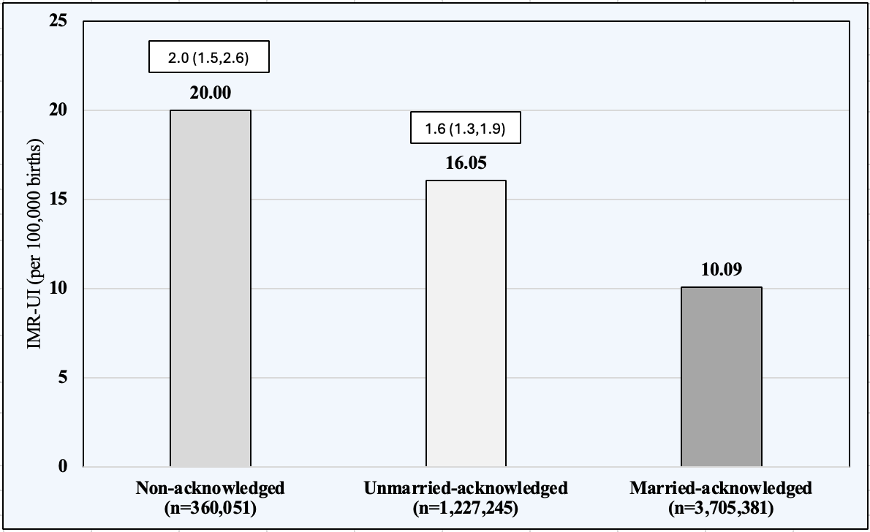Public Health & Prevention 1
Session: Public Health & Prevention 1
373 - Infant mortality rates due to unintentional injuries among term births to non-Latina White, non-Latina Black, and Latina foreign-born women in the US: the effect of paternal involvement
Sunday, April 27, 2025
8:30am - 10:45am HST
Publication Number: 373.5485
Lucy A.. Rubin, Ann & Robert H. Lurie Children's Hospital of Chicago, Chicago, IL, United States; Janardhan Mydam, John H Stroger, Jr. Hosp of Cook County, Chicago, IL, United States; James Collins, Ann & Robert H. Lurie Children's Hospital of Chicago, Chicago, IL, United States
- LR
Lucy A. Rubin, MD
NICU Fellow
Ann & Robert H. Lurie Children's Hospital of Chicago
Chicago, Illinois, United States
Presenting Author(s)
Background: The infant mortality rate due to unintentional injuries (IMR-UI) among term (37-42 wks) births to US-born women exceeds that of foreign-born women (Collins et al, MCHJ, 2013). A preliminary investigation showed that paternal non-acknowledgement (a proxy for non-paternal involvement) was a risk factor for infant death due to unintentional injury among US-born women and that there were minimal differences by race and ethnicity (Rubin et al, PAS, 2023). The population of foreign-born women in the US is expanding, and their birth outcomes merit research attention.
Objective: To determine the relationship between paternal involvement and infant mortality due to unintentional injuries among term births to foreign-born women in the US.
Design/Methods: Stratified and multivariable binomial regression analyses were performed on the 2011-2019 period-linked infant death and live birth dataset of term US births to foreign-born non-Latina White (NL-White), non-Latina Black (NL-Black) and Latina women (n=5,736,183). Marital status and paternal acknowledgement on the birth certificate were used to define paternal involvement: married with acknowledged father, unmarried with acknowledged father; and non-acknowledged father.
Results: Among foreign-born women, the IMR-UI for term births with either non-acknowledged or unmarried-acknowledged fathers exceeded that of those with married-acknowledged fathers; RR=2.0 (1.5,2.6) and 1.6 (1.3, 1.9), respectively (Figure 1). The unadjusted RR of IMR-UI for term births with either non-acknowledged or unmarried-acknowledged (compared to married-acknowledged) fathers were strongest among NL-White women and approximated unity among Latina women (Figure 2). Term births with non-acknowledged or unmarried-acknowledged fathers had a greater percentage of high-risk maternal characteristics including young age, low education attainment, and public medical insurance than those with married-acknowledged fathers (Table). The adjusted (controlling for selected maternal and infant co-variates) RR of IMR-UI for term births to NL-White, NL-Black, and Latina women with non-acknowledged (compared to married-acknowledged) fathers equaled 4.5 (1.8, 11.4), 3.2 (1.4,7.0), and 1.04 (0.6, 1.9); respectively.
Conclusion(s): Paternal non-involvement, or something closely related to it, is a strong risk factor for infant mortality due to unintentional injuries among term births to NL-White and NL-Black foreign-born women. Intriguingly, this relationship is absent among term births to Latina women.
Figure 1. Infant Mortality Rates Due to Unintentional Injuries (IMR-UI) According to Paternal Involvement

Figure 2. Infant Mortality Rates Due to Unintentional Injuries (IMR-UI) According to Maternal Race/Ethnicity and Paternal Involvement
.png)
Table. The Distribution of Maternal and Infant Characteristics According to Paternal Involvement
.png)

